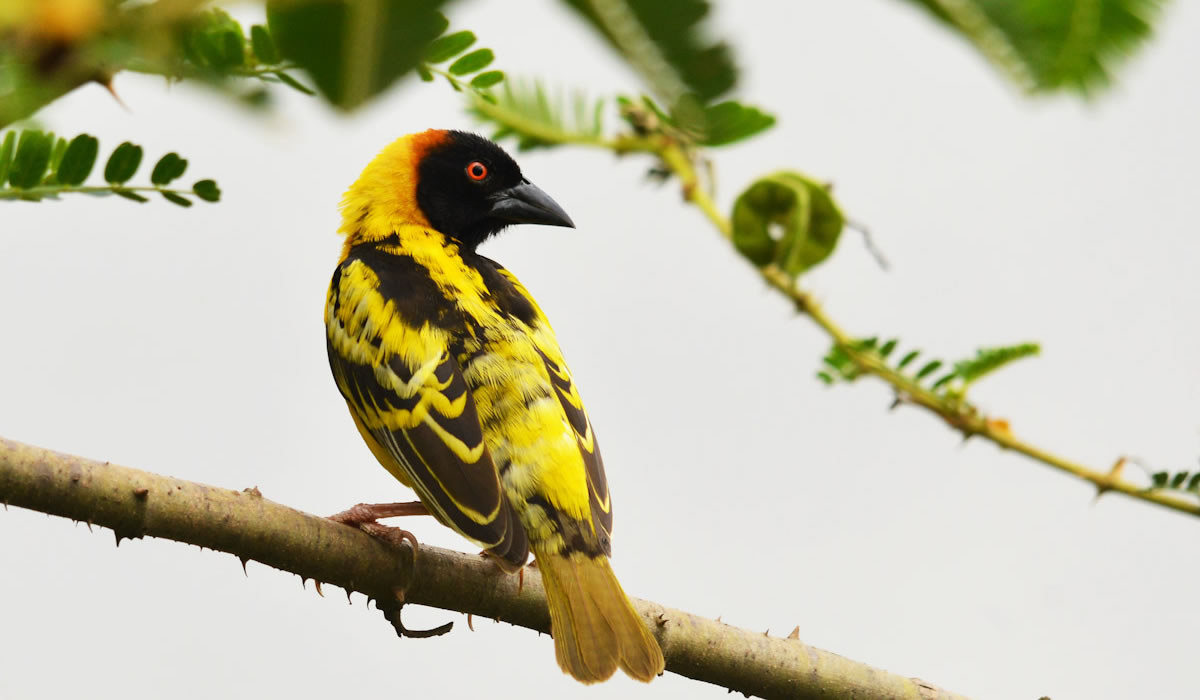Rwanda is a hidden gem for bird watchers and nature enthusiasts. Nestled in the heart of East Africa, Rwanda boasts an astonishing diversity of ecosystems ranging from high-altitude montane forests to expansive wetlands and savannas. This ecological diversity supports over 700 recorded bird species, making Rwanda one of the premier birding destinations on the African continent. Despite its small size, the country’s birding potential is immense, offering unique opportunities to encounter both endemic and migratory birds in a safe and compact travel environment.

Overview of Bird Watching in Rwanda
Bird watching in Rwanda is a year-round activity, although the best time to visit is during the long dry season from June to September. During this period, the weather is more favorable for forest treks and bird sightings. The short dry season from mid-December to February is also excellent for birding. While the wet seasons March to May and October to November can make travel more challenging due to muddy trails and occasional heavy rains, they also coincide with the breeding season for many bird species, offering vibrant plumage and intriguing mating behaviors for observers.
The country’s birdlife is enriched by its location at the convergence of several major African ecozones: the Albertine Rift montane forests, the Central African lowland rainforests, the East African savannahs, and extensive papyrus swamps. This diverse topography ensures a mix of habitats, from bamboo forests and volcanic slopes to wetland marshes and open grasslands, each offering a unique birding experience.
Key Birding Areas in Rwanda
-
Nyungwe Forest National Park
Located in the southwestern part of Rwanda, Nyungwe Forest is one of the oldest and most biodiverse rainforests in Africa. It is a top birding hotspot, with over 300 bird species, including 29 Albertine Rift endemics species found only in this part of Africa. Birders flock to Nyungwe to spot rare species such as the Red-collared Babbler, Grauer’s Swamp Warbler, Rwenzori Turaco, Kivu Ground Thrush, and Handsome Francolin. The park is also home to the Rwenzori Batis and Yellow-eyed Black Flycatcher. With its canopy walkways and well-maintained trails, Nyungwe offers excellent birding infrastructure in a lush setting that also supports chimpanzees and other primates.
-
Akagera National Park
Akagera, situated in eastern Rwanda along the border with Tanzania, presents a stark contrast to the montane forests of Nyungwe. It is a classic savannah ecosystem, characterized by open grasslands, acacia woodlands, and a network of lakes and swamps. The park is home to over 480 bird species and is the best place in Rwanda to spot savannah and water-associated birds. Notable species include the iconic Shoebill Stork, Papyrus Gonolek, African Fish Eagle, Grey-crowned Crane, Goliath Heron, and Meyer’s Parrot. The presence of open terrain and abundant water bodies makes birding relatively easy here, with high visibility and good opportunities for photography.
-
Volcanoes National Park
This park, located in northwestern Rwanda, is most famous for its mountain gorillas, but it is also an important birding destination. Set within the Virunga mountain range, the park encompasses bamboo forests, hagenia woodlands, and alpine moorland. Birders can look for Albertine Rift endemics such as the Archer’s Robin-chat, Dusky Crimsonwing, Ruwenzori Double-collared Sunbird, and Stripe-breasted Tit. Although the bird density is not as high as in Nyungwe, the chance to combine birding with gorilla trekking makes Volcanoes National Park an attractive option for multi-interest eco-tourists.
-
Rugezi Swamp
Rugezi Swamp, located in the northern highlands, is a protected wetland and a designated Ramsar site due to its ecological importance. It is one of the last strongholds of the Grauer’s Swamp Warbler, an endangered species endemic to the Albertine Rift. Other key species include the Papyrus Canary and the elusive White-winged Swamp Warbler. The swamp is also home to various herons, egrets, and aquatic birds, making it a paradise for wetland birding.
-
Kigali and Surrounding Areas
Surprisingly, even the capital city of Kigali offers impressive birding opportunities. The city’s clean and green landscape, dotted with gardens, wetlands, and hills, supports a wide array of common and rare bird species. Nyabarongo Wetland, located near Kigali, is home to the Papyrus Gonolek, Malachite Kingfisher, and African Jacana. The city also provides good opportunities for spotting urban birds like Pied Crow, Black Kite, and Variable Sunbird.
Iconic and Endemic Birds of Rwanda
Rwanda’s birdlife includes a significant number of Albertine Rift endemics, which are a major draw for international birders. Some of the most sought-after species include:
- Red-collared Babbler (Turdoides rufocinctus) – Once considered near mythical due to its limited range, this species is now reliably spotted in Nyungwe.
- Rwenzori Turaco (Ruwenzorornis johnstoni) – Known for its striking colors and loud call, it is one of the region’s most iconic birds.
- Shoebill Stork (Balaeniceps rex) – Though difficult to spot, this prehistoric-looking bird can be found in the Akagera wetlands.
- Grauer’s Swamp Warbler (Bradypterus graueri) – Endemic to the Albertine Rift, this secretive bird prefers high-altitude swamps.
- Albertine Owlet (Glaucidium albertinum) – A rarely seen and poorly understood species, recently confirmed in Rwanda, adding to the country’s ornithological value.
In addition to endemics, Rwanda hosts a variety of migratory birds during the northern winter months (October to April), including swallows, flycatchers, and raptors from Europe and Asia.
Bird Watching Logistics and Tours
Bird watching in Rwanda is relatively accessible, thanks to the country’s compact size, excellent road network, and safety. Most birding sites are within a few hours’ drive from Kigali, and local tour operators offer specialized birding tours ranging from short day trips to comprehensive multi-day excursions. These tours are usually led by knowledgeable local guides who are well-versed in bird calls, habitats, and identification, greatly enhancing the quality of the experience.
For independent travelers, it is advisable to hire local guides at national parks to improve sighting chances and comply with park regulations. Birders should come prepared with binoculars, field guides, weather-appropriate clothing, and insect repellent. The use of apps such as eBird and Merlin Bird ID has also made bird identification and record-keeping easier for both amateurs and professionals.
Conservation and Challenges
Rwanda has made remarkable strides in conservation, and bird protection has benefited from these broader efforts. The Rwanda Development Board (RDB), in collaboration with international NGOs and local communities, has spearheaded several conservation initiatives. These include the restoration of Akagera’s wildlife, reforestation of degraded areas in Nyungwe, and the protection of wetlands like Rugezi and Nyabarongo.
Nevertheless, bird populations face ongoing threats from habitat destruction, wetland drainage, agricultural encroachment, and climate change. As Rwanda continues to develop, balancing economic growth with ecological preservation remains a key challenge. Bird watchers and eco-tourists can contribute positively by supporting sustainable tourism practices, advocating for conservation, and participating in citizen science efforts such as bird counts and reporting sightings on platforms like eBird.
Cultural Integration and Community Involvement
An often-overlooked aspect of bird watching in Rwanda is the opportunity to engage with local communities. Community-based tourism initiatives, such as those around Nyungwe and Volcanoes National Park, often involve local guides, homestays, and cultural experiences. This not only enriches the birding journey but also supports livelihoods and fosters a conservation-minded ethos among local populations.
Bird festivals and awareness campaigns are also growing in Rwanda, promoting bird watching as a recreational and educational activity. These events help generate local interest and nurture the next generation of Rwandan ornithologists and conservationists.
Bird watching in Rwanda offers a unique and rewarding experience that combines high biodiversity, accessible landscapes, and vibrant culture. Whether you’re a seasoned birder seeking rare endemics or a nature lover looking for a peaceful yet thrilling activity, Rwanda provides an unmatched birding adventure. With its scenic beauty, hospitable people, and strong conservation ethos, Rwanda stands out not just as a gorilla-trekking paradise but also as a world-class bird watching destination.
As the country continues to invest in sustainable tourism and environmental protection, the future of birding in Rwanda looks bright. For those ready to explore the avian wonders of Africa, Rwanda beckons with its songs, feathers, and forested hills a symphony of nature waiting to be discovered.

